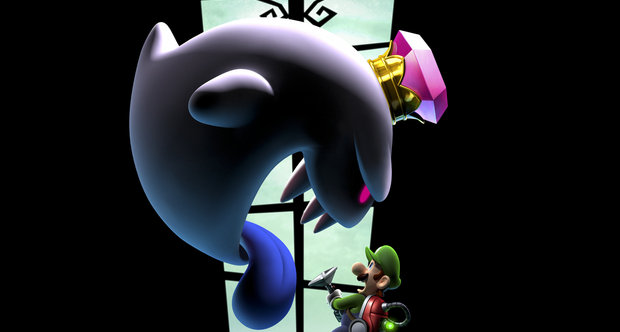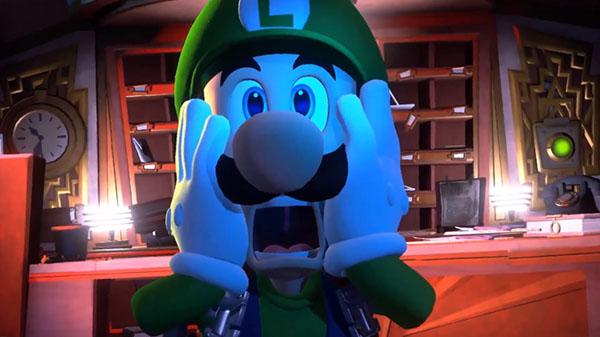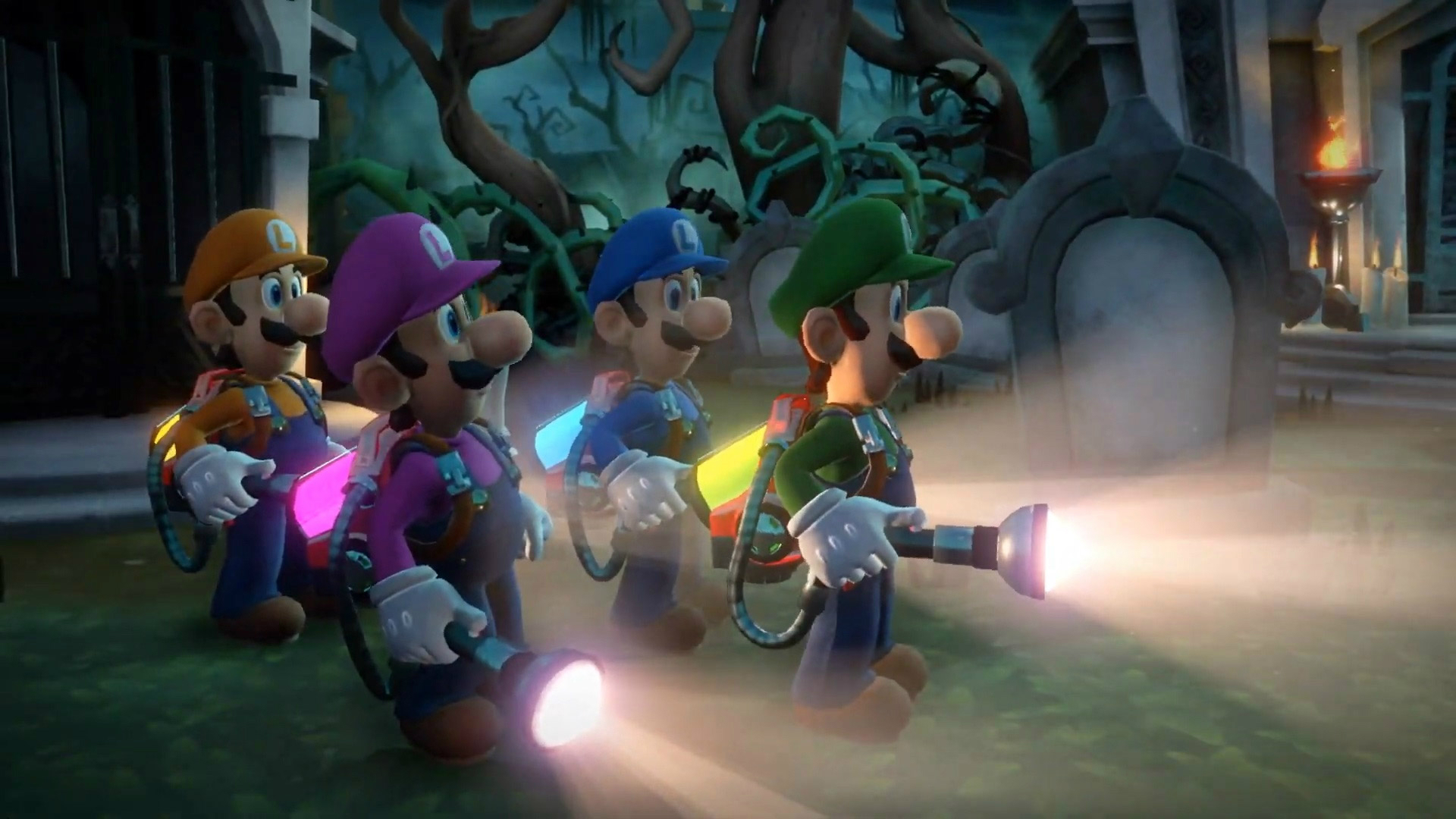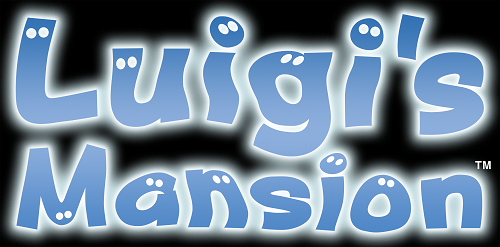
Having not originally owned a GameCube and effectively missing an entire generation of Nintendo games, my first introduction to Luigi’s Mansion came with the 3DS sequel, Luigi’s Mansion 2: Dark Moon. Dark Moon quickly became one of my favourite 3DS games and I was curious to play the original game to see how it differed from its sequel. Cue Nintendo’s announcement that Luigi’s Mansion was being ported to the 3DS, giving me the opportunity to play the game on the very same console that introduced me to the series. The more focused design results in more unique and interesting ghosts and encounters than its sequel, but its shortcomings are evident on the 3DS.
Stepping out of his brother’s shadow to become a protagonist in his own right, Luigi enters from stage right into a dark and musty mansion straight out of a horror film. Luigi, and Mario before him, has been lured here by a letter advising him that he’s won a free mansion – exactly the type of scenario that you would expect nobody to fall for. Luigi’s poor judgment aside, events take a turn as he realises his brother has gone missing and is suddenly attacked by some of the mansion’s resident ghosts. Enter Professor E. Gadd, a long-in-the-tooth scientist who has just the thing to flip the power balance and give Luigi the means to find – and later save – his brother; the Poltergust 3000, a vacuum cleaner that can slurp down ghosts and store them for later portraitification. In short, your mission is to explore and investigate the mansion, collecting the myriad ghost residents and work your way towards saving your red-hatted brother.
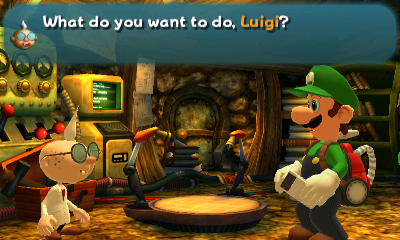
While something can be said for the atmosphere in Luigi’s Mansion, it is those ghosts and your encounters with them that really shine. There are well over twenty unique ghosts that you will do battle with over the course of your time with the game, with each ghost coming with their own unique hook. For some, this is how you begin the encounter – like freezing a warm bath or stealing a ghost’s food – and for others it’s how you battle them – such as sending their own attacks back at them to leave them vulnerable. No two ghost encounters feel quite the same, leaving you guessing and experiencing new things all the way to the end of the game. After exposing the heart of the ghost you’re facing, it’s time to activate your trusty Poltergust and begin sucking down that pesky bit of ectoplasm. By moving against the ghost’s movements, just like you would in many fishing games, you’ll gradually reduce the ghost’s health and shake loose some treasures along the way. Once the ghost’s health hits zero, you suck it down for good and it will never bother you again.
While the encounters themselves are interesting and unique, this is where Luigi’s Mansion begins to fall apart. Unfortunately, without two analog sticks available, the controls of this 3DS port are clunky and frustrating. With an almost isometric viewpoint, the non-existent right analog stick is used to spin Luigi around and angle the Poltergust up and down to correctly target ghosts and parts of the environment. I played the game on a New Nintendo 3DS, so I was able to use the analog nub to do this, but it was far from ideal and led to some extremely frustrating moments. These controls are combined with an emphasis on properly judging distance and orientation in a 3D landscape – which isn’t particularly easy to do on the small 3DS screen. It’s clear Luigi’s Mansion was designed to take advantage of screen sizes and controls schemes synonymous with home consoles and this results in an experience that is far from ideal on the 3DS.
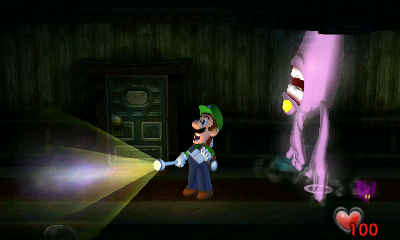
Part of the reason Luigi’s Mansion is able to avoid becoming stale is due to how tightly designed the experience is. Which is to say, the game is extremely short. While exploring the mansion is a major focus, and there are a number of secrets to find along the way, a full playthrough of the story can easily be completed in 5 hours. There is a partial focus on replaying the game to get a better end ranking, as well as a harder difficulty mode, a boss rush mode and a brand-new co-op mode, but these likely won’t do much for many people playing the game. The co-op modes can be fun, but the effective lowering of difficulty by having a second player present just causes the content to rush through faster than ever. The harder difficulty mode is the real drawcard upon completion, however this will depend on how you feel about repeating the same story content again.
Throughout all of this, Luigi’s Mansion builds a fantastically spooky atmosphere through its visuals and music. The mansion is obviously disused, as shown by its cobwebs, dark corridors and dusty interiors. Combined with the eerie music, Luigi’s utterances of fear, anxiety and shock, the tone is set for the whole game. Obviously, the game doesn’t quite hold up against the original GameCube version, but for the 3DS it’s a technically impressive port and does an admirable job in comparisons. As with many other 3D games on 3DS there are some very obvious jagged edges, but these don’t take away from the overall experience.
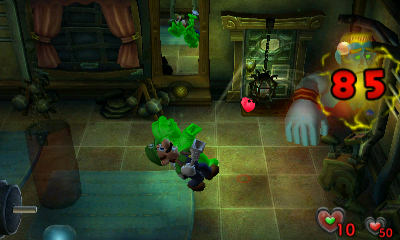
What does take away from the experience, however, is the utilisation of Amiibo in the game. Nintendo have copped some flak in the past for the things they lock behind Amiibo in their games – such as the hard mode for Samus Returns – and Luigi’s Mansion is no different. While many ports in the past have included optional methods to reduce the game’s difficulty, Nintendo have opted to lock these options behind Amiibo in this instance. Mario Amiibo turn the poison mushrooms dropped by ghosts into super mushrooms, healing you instead of damaging you. Toad Amiibo unlock a healing/save point in the mansion, effectively removing the need to leave the mansion to heal or save. Boo Amiibo reveal the locations of three Boos hidden in the mansion, removing the need for you to search for them. Finally, Luigi Amiibo provide you with an immediate revive if your health reaches zero. If you wanted to purchase all four Amiibo to make these changes you would be looking at a retail cost of $71.80 – which is more than the cost of the game itself. Combined, they turn a relatively easy game into an absolute cakewalk, removing all tension from the experience and making an already short game fly by even faster. These are changes that could have easily been included with the game, like with Funky Kong in Donkey Kong Tropical Freeze and the assists in Mario Kart 8 Deluxe, and should not be locked behind optional purchases.
Luigi’s Mansion 3DS is a unique experience, effortlessly combining tension and atmosphere with a fantastic design style and varied enemy encounters to create something truly one-of-a-kind. Unfortunately, by bringing it to the 3DS, control issues have been introduced that didn’t need to be considered for the original release and the added co-op mode does little to extend the game’s incredibly short length. Combined with a questionably utilisation of Amiibo, Luigi’s Mansion 3DS fails to live up to the standards set by its original GameCube release.
- Unique and varied enemy design
- Great visual conversion to the 3DS
- Controls are poorly suited to the 3DS
- Co-op mode does nothing to combat the game's short length
- Questionable amiibo implementation

